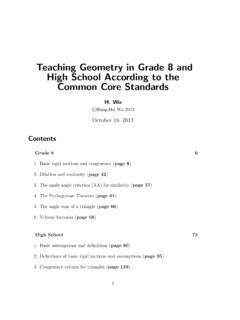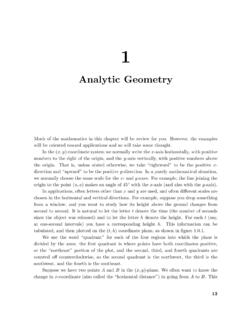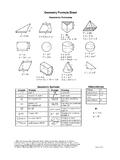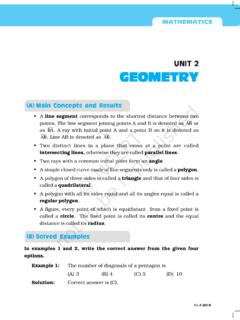Transcription of DIFFERENTIAL GEOMETRY: A First Course in Curves and …
1 DIFFERENTIAL geometry : A First Course in Curves and Surfaces Preliminary Version Summer, 2016. Theodore Shifrin University of Georgia Dedicated to the memory of Shiing-Shen Chern, my adviser and friend 2016. c Theodore Shifrin No portion of this work may be reproduced in any form without written permission of the author, other than duplication at nominal cost for those readers or students desiring a hard copy. CONTENTS. 1. Curves .. 1. 1. Examples, Arclength Parametrization 1. 2. Local Theory: Frenet Frame 10. 3. Some Global Results 23. 2. SURFACES: LOCAL THEORY .. 35. 1. Parametrized Surfaces and the First Fundamental Form 35. 2. The Gauss Map and the Second Fundamental Form 44.
2 3. The Codazzi and Gauss Equations and the Fundamental Theorem of Surface Theory 57. 4. Covariant Differentiation, Parallel Translation, and Geodesics 66. 3. SURFACES: FURTHER TOPICS .. 79. 1. Holonomy and the Gauss-Bonnet Theorem 79. 2. An Introduction to Hyperbolic geometry 91. 3. Surface Theory with DIFFERENTIAL Forms 101. 4. Calculus of Variations and Surfaces of Constant Mean Curvature 107. Appendix. REVIEW OF LINEAR ALGEBRA AND CALCULUS .. 114. 1. Linear Algebra Review 114. 2. Calculus Review 116. 3. DIFFERENTIAL Equations 118. SOLUTIONS TO SELECTED EXERCISES .. 121. INDEX .. 124. Problems to which answers or hints are given at the back of the book are marked with an asterisk (*).
3 Fundamental exercises that are particularly important (and to which reference is made later) are marked with a sharp (] ). June, 2016. CHAPTER 1. Curves 1. Examples, Arclength Parametrization We say a vector function fW .a; b/ ! R3 is Ck (k D 0; 1; 2; : : :) if f and its First k derivatives, f0 , f00 , .. , , exist and are all continuous. We say f is smooth if f is Ck for every positive integer k. A parametrized curve is a C3 (or smooth) map W I ! R3 for some interval I D .a; b/ or a; b in R (possibly infinite). We say is regular if 0 .t/ 0 for all t 2 I . We can imagine a particle moving along the path , with its position at time t given by .t/. As we learned in vector calculus, d.
4 T C h/ .t/. 0 .t/ D D lim dt h!0 h is the velocity of the particle at time t. The velocity vector 0 .t/ is tangent to the curve at .t/ and its length, k 0 .t/k, is the speed of the particle. Example 1. We begin with some standard examples. (a) Familiar from linear algebra and vector calculus is a parametrized line: Given points P and Q in ! R3 , we let v D PQ D Q P and set .t/ D P C tv, t 2 R. Note that .0/ D P , .1/ D Q, and for 0 t 1, .t/ is on the line segment PQ. We ask the reader to check in Exercise 8 that of all paths from P to Q, the straight line path gives the shortest. This is typical of problems we shall consider in the future. (b) Essentially by the very definition of the trigonometric functions cos and sin, we obtain a very natural parametrization of a circle of radius a, as pictured in Figure (a).
5 T/ D a cos t; sin t D a cos t; a sin t ; 0 t 2 : (a cos t, a sin t). (a cos t, b sin t). b t a a (a) (b). F IGURE 1. 2 C HAPTER 1. C URVES. (c) Now, if a; b > 0 and we apply the linear map T W R2 ! R2 ; T .x; y/ D .ax; by/;. we see that the unit circle x 2 Cy 2 D 1 maps to the ellipse x 2 =a2 Cy 2 =b 2 D 1. Since T .cos t; sin t/ D..a cos t; b sin t/, the latter gives a natural parametrization of the ellipse, as shown in Figure (b). (d) Consider the two cubic Curves in R2 illustrated in Figure On the left is the cuspidal cubic y=tx y2=x3+x2. y2=x3. (a) (b). F IGURE y 2 D x 3 , and on the right is the nodal cubic y 2 D x 3 Cx 2 . These can be parametrized, respectively, by the functions.
6 T/ D .t 2 ; t 3 / and .t/ D .t 2 1; 2 1//: (In the latter case, as the figure suggests, we see that the line y D tx intersects the curve when .tx/2 D x 2 .x C 1/, so x D 0 or x D t 2 1.). z2=y3. z=x3. y=x2. F IGURE 1. E XAMPLES , A RCLENGTH PARAMETRIZATION 3. (e) Now consider the twisted cubic in R3 , illustrated in Figure , given by .t/ D .t; t 2 ; t 3 /; t 2 R: Its projections in the xy-, xz-, and yz-coordinate planes are, respectively, y D x 2 , z D x 3 , and z 2 D y 3 (the cuspidal cubic). (f) Our next example is a classic called the cycloid: It is the trajectory of a dot on a rolling wheel (circle). Consider the illustration in Figure Assuming the wheel rolls without slipping, the P.
7 T a O. F IGURE distance it travels along the ground is equal to the length of the circular arc subtended by the angle through which it has turned. That is, if the radius of the circle is a and it has turned through angle t, then the point of contact with the x-axis, Q, is at units to the right. The vector from the origin to C C. a P t a cos t P a sin t O Q. F IGURE ! ! ! the point P can be expressed as the sum of the three vectors OQ, QC , and CP (see Figure ): ! ! ! ! OP D OQ C QC C CP. D .at; 0/ C .0; a/ C . a sin t; a cos t/;. and hence the function .t/ D .at a sin t; a a cos t/ D sin t; 1 cos t/; t 2R. gives a parametrization of the cycloid. (g) A (circular) helix is the screw-like path of a bug as it walks uphill on a right circular cylinder at a constant slope or pitch.
8 If the cylinder has radius a and the slope is b=a, we can imagine drawing a line of that slope on a piece of paper 2 a units long, and then rolling the paper up into a cylinder. The line gives one revolution of the helix, as we can see in Figure If we take the axis of the cylinder to be vertical, the projection of the helix in the horizontal plane is a circle of radius a, and so we obtain the parametrization .t/ D .a cos t; a sin t; bt/. 4 C HAPTER 1. C URVES. F IGURE Brief review of hyperbolic trigonometric functions. Just as the circle x 2 Cy 2 D 1 is parametrized by .cos ; sin /, the portion of the hyperbola x 2 y 2 D 1 lying to the right of the y-axis, as shown in Figure , is parametrized by.
9 Cosh t; sinh t/, where et C e t et e t cosh t D and sinh t D : 2 2. sinh t 1. By analogy with circular trigonometry, we set tanh t D and sech t D . The following cosh t cosh t (cosh t, sinh t). F IGURE formulas are easy to check: cosh2 t sinh2 t D 1; tanh2 t C sech2 t D 1. sinh0 .t/ D cosh t ; cosh0 .t/ D sinh t ; tanh0 .t/ D sech2 t ; sech0 .t/ D tanh t sech t : 1. E XAMPLES , A RCLENGTH PARAMETRIZATION 5. (h) When a uniform and flexible chain hangs from two pegs, its weight is uniformly distributed along its length. The shape it takes is called a As we ask the reader to check in Exercise 9, the catenary is the graph of f .x/ D C /, for any constant C > 0. This curve will appear F IGURE numerous times in this Course .
10 O. Example 2. One of the more interesting Curves that arise in nature is the The traditional story is this: A dog is at the end of a 1-unit leash and buries a bone at .0; 1/ as his owner begins to walk down the x-axis, starting at the origin. The dog tries to get back to the bone, so he always pulls the leash taut as he is dragged along the tractrix by his owner. His pulling the leash taut means that the leash will be tangent to the curve. When the master is at .t; 0/, let the dog's position be . ; , and let the leash F IGURE make angle .t/ with the positive x-axis. Then we have D t C cos .t/, D sin .t/, so dy y 0 .t/ cos .t/ 0 .t/. tan .t/ D D 0 D : dx x .t/ 1 sin .t/ 0 .t/.








